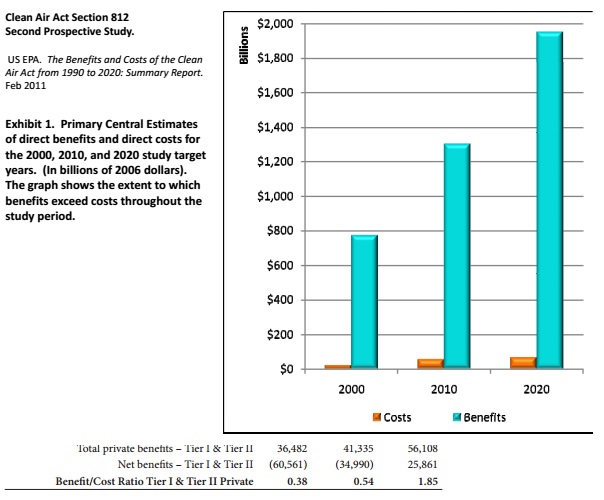What Makes Cost Benefit Analysis Important?

In the program being evaluated, one outcome is to increase social assets i.e. social connections. I believe we can place a utility value on social connections; but I struggle to think how we can place a monetary value on it. The best cost-benefit analyses take a broad view of costs and benefits, including indirect and longer-term effects, reflecting the interests of all stakeholders who will be affected by the programme.
These approaches take into account the time value of money, or the idea that money in your pocket today is worth than money you may receive in the future, due to its earning potential. For the inexperienced project manager, creating your assumptions is one of the scariest aspects of cost-benefit analysis. The fear decreases once you understand that assumptions are supported by evidence, and are not just wild guesses.
Ethical problems in cost-inclusive evaluation are highlighted, and possible solutions suggested. Viewing CBA and CEA as crucial parts of improvement-oriented operations research is recommended. Links for manuals and Web sites for cost-inclusive evaluation in health and human services are provided.
Cost benefit analysis in project management is one more tool in your toolbox. This one has been devised to evaluate the cost versus the benefits in your project proposal.
The purpose of applying Cost Benefit analysis is to calculate the ratio of benefit over costs. It is a simple technique that can be used for financial decisions. Simply put a Cost Benefit Analysis is made to identify how well, or how poorly, a project will be concluded. A cost-benefit analysis (CBA) is the process used to measure the benefits of a decision or taking action minus the costs associated with taking that action. In many models, a cost-benefit analysis will also factor the opportunity cost into the decision-making process.
Opportunity costs are alternative benefits that could have been realized when choosing one alternative over another. In other words, the opportunity cost is the forgone or missed opportunity as a result of a choice or decision. Factoring in opportunity costs allows project managers to weigh the benefits from alternative courses of action and not merely the current path or choice being considered in the cost-benefit analysis.
Industry benchmarks, average cost and average rates of return are all useful proxies when the project-specific data is missing. A cost-benefit analysis is a procedure used by businesses to assess the value of undertaking a project or making an important decision.
Unfortunately, the farther you look, the less confident you can be of your estimates. For example, you may expect to reap benefits for years from a new computer system, but changing technology may make your new system obsolete after only one year. In an effort to embed these new ways of working, we deliver evaluation and cost-benefit analysis training sessions for staff from a range of organisations and with varying levels of experience. Training activity includes ‘light touch’ introduction sessions on the tools and processes we use in our evaluation and cost-benefit analysis activities, and more in-depth full-day training courses which help organisations to build capacity to undertake their own cost-benefit analysis and to embed these new skills. Please click here for more information on our training courses.
The shorter the payback period, the less time you’ll have to wait https://investmentsanalysis.info before your project starts making money. What are the benefits?
- In many models, a cost-benefit analysis will also factor the opportunity cost into the decision-making process.
- Finally, a calculation is made as to the costs and QALY losses associated with the various proposed scenarios (e.g., Pap smears annually and HPV vaccination).
- QALYs emerged to be used in cost utility, or cost effectiveness in evaluating medical interventions for several reasons.
For example, a RAND Corp. study estimates that smokers, roughly speaking, pay their own way because of the excise taxes they pay on cigarettes and the amounts they bequeath to survivors through net contributions to pension plans. Others who do burden analysis, including those who determine what is admissible in court, are more selective in what they are willing to accept as relevant. They will count increases in some medical costs financed by others such as those associated with hospitalization but exclude other medical costs which would be saved, such as costs of long-term care. Social burden analysis awaits a theoretical grounding to put it on equal footing with benefit–cost analysis.
What Is the Relevance of Cost-Benefit Analysis for Business?
A cost-benefit analysis is a process businesses use to analyze decisions. The business or analyst sums the benefits of a situation or action and then subtracts the costs associated with taking that action.
For these reasons, we may turn to the cost-effectiveness analysis. Values which individuals place on changes in their own probabilities of survival may be less than the value to all of society because the values that others place on the individual’s life are not counted. The strongest case for including others’ values is within the individual’s immediate family.
It is commonly used in commercial transactions, business or policy decisions (particularly public policy), and project investments. A French economist and technical analysis engineer Jules Dupit introduced the concept of CBA in his article in 1848. After this date, a famous economist Alfred Marshall formalized this approach.
How to Evaluate the Cost Benefit Analysis
In this article, we’ll walk you through the process of cost benefit analysis, and offer insight and tips from industry experts. They’ll shine a light on the risks and uncertainties you should be aware of as you work, and provide real-world examples to show cost benefit analysis in action. This process takes time, but it is certainly worth it. We have worked with a number of Early Years public social partnerships using this process over the last few months who have been able to identify potential savings to the “public purse” in most cases. On average the projects only needed to succeed in avoiding costs in around 25% of cases in order to cover the full costs of the service interventions.
Emerging directions in cost-inclusive assessment are noted, including evaluating costs of using different services to add Quality-Adjusted Life Years and Disability-Adjusted Life Years – nonmonetary measures that can be almost as useful for comparing outcomes of diverse programs as monetary measures, i.e., program benefits. Advantages of conceptualizing ‘costs’ more broadly as the value of the specific types and amounts of resources used to provide services are explained.


